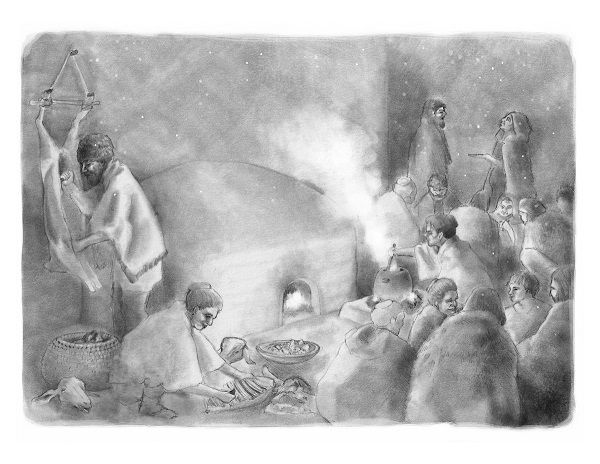Daily life took place both at the settlement of Çatalhöyük and away from it, in the surrounding landscape. Men and women led very similar lives, with analysis of human skeletons showing generally identical diets. Infant mortality was high, as were the risks for women during childbirth. However in general, people lived healthily and actively. They ate a varied diet containing both animal products such as fish and beef and plants such as barley and wheat. Remarkably, upon their death, people were buried under the floors of houses. The bodies were often tightly bound in a flexed position and placed in a simple grave with few or no artifacts.

People crafted obsidian and bone tools as well as ceramic materials. The obsidian and bone were not only used for subsistence but also to create interesting objects such as clay figurines and beads. Many of the tools themselves were also beautifully decorated. Obsidian was sourced from Cappadocia and Eastern Turkey, and some traders even travelled as far as the Red Sea to obtain baskets and shells. These were a people who valued artistry and aesthetics.
Surprisingly for such a sizeable settlement, food, tools and other resources were shared equally and used by all. Ritual activities at Çatalhöyük revolved around hunting, death and animals. Wild bulls were needed for feasts, and there were probably taboos or special meanings for leopards and bears. Today, many people believe that a mother goddess was worshipped at Çatalhöyük based on the discovery of numerous female figurines. However recent reinterpretations of the data have suggested that male and animal figurines were just as common as their female counterparts, if not more so. Equality in all senses appears to have been of primary importance for the people of Çatalhöyük.






